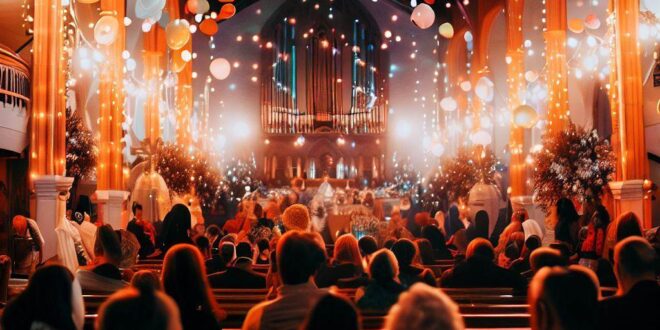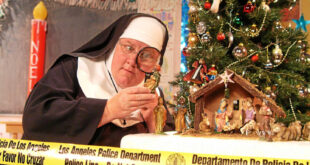In a small town nestled amidst rolling hills, there stood a charming little church called St. Mary’s. It was a place of solace, where the townsfolk gathered every Sunday to find comfort, share stories, and connect with their faith.
Inside St. Mary’s, a group of dedicated volunteers worked tirelessly to keep the church running smoothly. One of these volunteers was a jovial man named Frank. Frank had a knack for spreading laughter and cheer wherever he went, even within the hallowed walls of the church.
Every week, as the congregation gathered for Sunday service, Frank would discreetly sprinkle a touch of humor into the proceedings. It wasn’t irreverent or disrespectful; rather, it was a light-hearted way to ease the seriousness of religious rituals and create a warm atmosphere.
During the hymns, Frank would often add a playful twist to the lyrics. His rich baritone voice boomed with enthusiasm as he led the congregation in singing, occasionally throwing in a silly word or two. The familiar tunes took on a new life, and soon the entire church would join in laughter.
But Frank’s humor didn’t end there. During the sermon, when the pastor shared profound teachings and biblical stories, Frank would find a clever anecdote or a gentle jest to underscore the message. It made the congregation chuckle, but it also helped them remember the essence of the sermon long after they left the church.
Outside of the service, Frank organized social events that brought the community closer together. He organized picnics, game nights, and talent shows, where the townsfolk could showcase their hidden talents. Frank’s witty remarks and good-natured banter turned these gatherings into lighthearted celebrations of joy and camaraderie.
Some may have questioned whether there was a place for humor within the sacred walls of a church, but Frank’s approach brought a new perspective. Laughter, he believed, was a universal language that transcended barriers. It could bridge the gap between the profound and the ordinary, allowing people to connect with their faith on a deeper level.
As time passed, St. Mary’s became known for its warm and welcoming atmosphere. People from neighboring towns began visiting, drawn by the stories of a church where laughter and faith coexisted harmoniously. The pews filled with smiles, and the sound of laughter echoed through the hallways.
Frank’s brand of church humor reminded the congregation that spirituality didn’t always have to be somber or solemn. It could be uplifting, joyful, and even a little bit silly. It reminded them that the power of faith lay not only in the seriousness of the rituals, but also in the genuine connections they forged with one another.
And so, within the walls of St. Mary’s, church humor became a cherished tradition. Frank’s infectious laughter and playful spirit left an indelible mark on the hearts of those who gathered there. It served as a reminder that in the embrace of faith and laughter, the human spirit could find solace, hope, and a deep sense of belonging.




